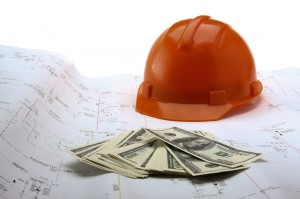One of the most important tasks of any general contractor or sub-contractor is construction estimating. Misreading a blueprint, or forgetting or adding a zero, can cost you boat loads of money or cause you to lose the bid. While we know being the lowest bidder will award your company the project, it is crucial your project estimator is as accurate as possibl e to avoid headaches.
e to avoid headaches.
So how do you make sure your bid is accurately calculated? The more you know about the project and your company’s ability to deliver what is being requested, the more precise your bid estimate will be. Before you start estimating you next bid, take a look at these helpful tips.
1) Thoroughly read the plans and specifications. You may have initially glanced through the project description and scope of work, but go through the plans and specs with a fine tooth comb. This will provide an overall picture of the project itself and will also allow you to find any discrepancies between the two.
2) Don’t assume, ever. If you need clarification on something, don’t guess, just simply ask. The more you know about the project the more accurate your bid will be. It may be what our parents and teachers always told us, but they were right. No question is a dumb question.
3)Break project down by division. While larger companies may use construction estimating programs, the majority of construction companies calculate their estimates by hand or use spreadsheets. Typically estimates are broken down by divisions that were created by the Construction Specification Institute (CSI). These CSI codes break the project down into various sections that are based on the trade or materials involved. Bid estimators can organize the job with much more ease and can ensure that the materials, labor, and equipment are accounted for each portion of the job.
4) Create a cushion. If you are unsure of how long the project will take, add a little more time even though this means your estimate increases. Same goes for material. “We did not waste any material,” said no construction company ever. Creating a little extra cushion could be what saves you from going over budget if awarded.
5) Account for everything. Sure you need to know how long a project will take and what materials you need to complete the project, but what else do you need? Remember to account for equipment rentals, tools, fuel, sub-contractors, and even the small supplies such as nails or screws that many do not take into account.
6) Labor costs estimated by division. Labor costs are not just the hours spent building the physical structure. By division, you should account for laborers and cleanup time, as well as management hours.
7) Include general project costs. These are costs such as insurance, administrative tasks, temporary office space like a trailer, and any communications. Anything that is not related to materials or labor also has to be part of your estimate.
8) Account for the unexpected. Keep in mind that vendor prices can fluctuate based on the demand. It is a great idea to note that prices are subject to change because of availability of material. Also noting that unexpected problems may arise that can delay the project does not hurt. Accepting the unpredictable nature of construction upfront can ease the owner’s surprise when something unplanned happens.
9) The mark-up. After you have added up all of the estimates from each division, it is time to tack on your profit. Add a percentage to the total to account for overhead and your profit. Depending on the size of the project and the competitive nature of the project, this mark-up will vary.
If you are ever looking for more bidding opportunities, check out our online Planroom. We have local public bid jobs listed year round that you can view for free to gauge your interest in bidding. Or maybe you are interested in having your project out there for sub-contractors to bid on? Avalon’s Planroom is the perfect bid management solution for you. Give us a call today to learn more.
If you liked this blog you might also be interested in reading: I’m Dreaming of a Bid Project
Download our free case study to learn how Avalon’s legacy plan scanning can make your plans unseen but accessible.






